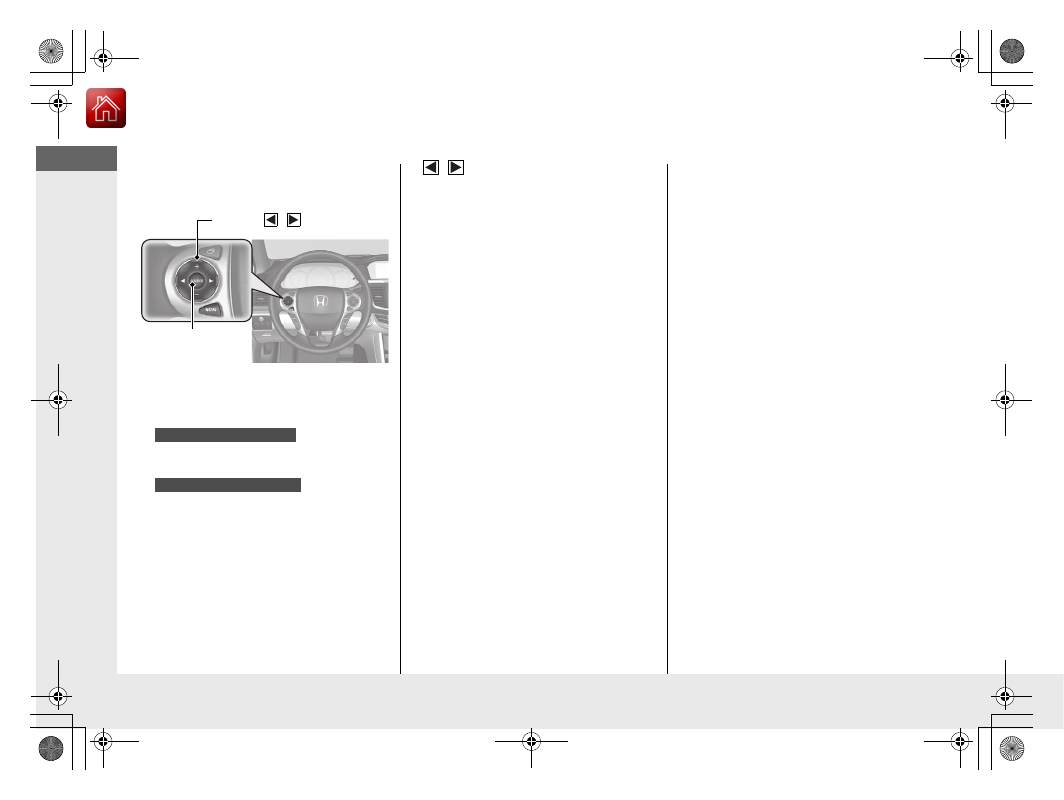Honda Accord Coupe (2017 year). Instruction - part 2

16
Quick
Referenc
e Guide
Features
Audio Remote Controls
●
(
+ /
(
- Button
Press to adjust the volume up/down.
● SOURCE Button
FMAMCDUSBiPod
Bluetooth® AudioPandora®
*
AUX
FMAMSiriusXM®
*
CDUSBiPod
Pandora®
*
Bluetooth® AudioAudio
Apps
(
+ /
(
- /
/
Button
SOURCE
Button
Models with one display
Models with two displays
●
/
Button
Radio:Press to change the preset station.
Press and hold to select the next or
previous strong station.
CD/USB device:
Press to skip to the beginning of
the next song or return to the
beginning of the current song.
Press and hold to change a folder.